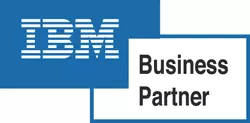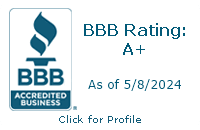July 2006
To see how these concepts played out in our project for this client, please visit Using Web Services to Deliver Information to Mobile Devices.

One strength of our firm is our ability to quickly understand "tech speak" – advanced technology concepts that initially excite technical personnel – and turn it into "business use" for executives and line-of-business managers. A good example of this is shown in this month's case study, which deals with Service Oriented Architecture (SOA) and web services.
Service Oriented Architecture
SOA has been around conceptually for many years, but has gained momentum and validation with IBM, Microsoft, Sun, SAP, and others participating in developing – and agreeing to follow – a common set of standards about how the underlying architecture would work. Since then, these companies have worked to incorporate many web service standards into their products and make them practical and usable. The base level of web services generally accepted to qualify as an SOA include:
-
The XML markup language for describing data.
-
The HTTP protocol for communicating between clients and servers.
-
The SOAP protocol for exchanging XML messages using the HTTP protocol.
-
The Web Services Description Language (WSDL), which is an XML-based description of how a client ("consumer") interacts with a web service on the server ("provider").
What's the "business use" of this "tech speak"? There are several:

-
SOA is based on open web service standards that have gained broad industry acceptance – thus, businesses are less constrained by proprietary vendor technology.
-
SOA permits different systems, based on different technologies, to communicate with each other – potentially simplifying integration of these systems.
-
SOA permits composite applications (also called "enterprise mashups"), which are applications combining functions from multiple sources to provide an integrated user experience – this enables greater business agility by making it easier for systems to be quickly tailored to a changed environment.
-
More broadly, SOA can help ensure that actual business processes are represented in the software application as distinct services – thereby linking information systems functionality with specific business requirements.
The project featured in this case study takes advantage of the SOA capabilities in the relevant products – IBM Lotus Notes/Domino, BlackBerry Mobile Data System, and Windows Mobile Compact Framework. While this project reflects a relatively simple application, it illustrates how applying SOA – to develop a "provider" service in the Contact Management database, and to develop "consumer" services for the BlackBerry and Windows Mobile devices – allows:
-
Efficient extraction and delivery of information to different types of clients.
-
Development of "provider" services in the native rapid application development (RAD) environment of the host application.
-
Development of "consumer" services in platform-specific RAD tools, where the tools use the data description obtained from the "provider" to rapidly generate data entry and data results screens.
In a recent issue of Consulting Magazine, technology research firm Gartner predicts that SOA will provide the basis for 80% of new development projects by 2008. Gartner goes on to say that "through 2015, service-oriented architecture will transform software from an inhibitor to an enabler of business change."
Are you ready for technology to transform business? We are!
We are excited to be in discussions to develop the mobile capabilities of a middle-market ERP package, which would enable capabilities such as those illustrated in this case study. We hope to be able to announce something on this later in the year.
Sincerely yours,
![]()
Todd L. Herman
PS – Click Here for The Agile CFO Survey »
PPS – For an update on Todd's Results, click here. For background on this, please see:





